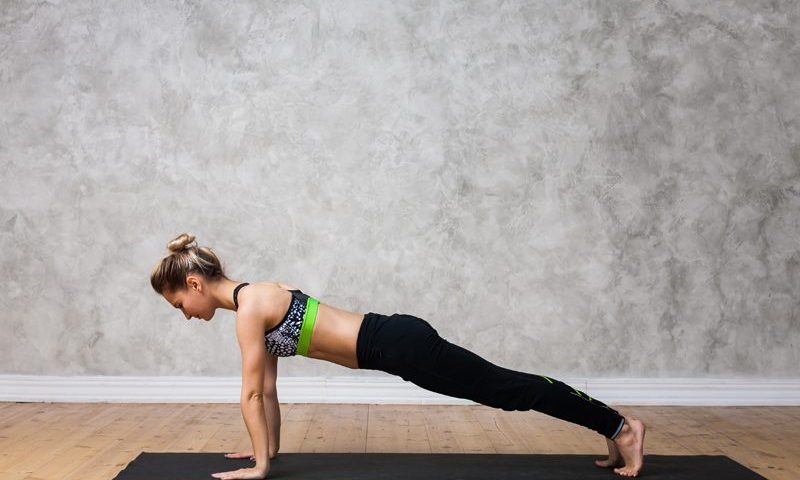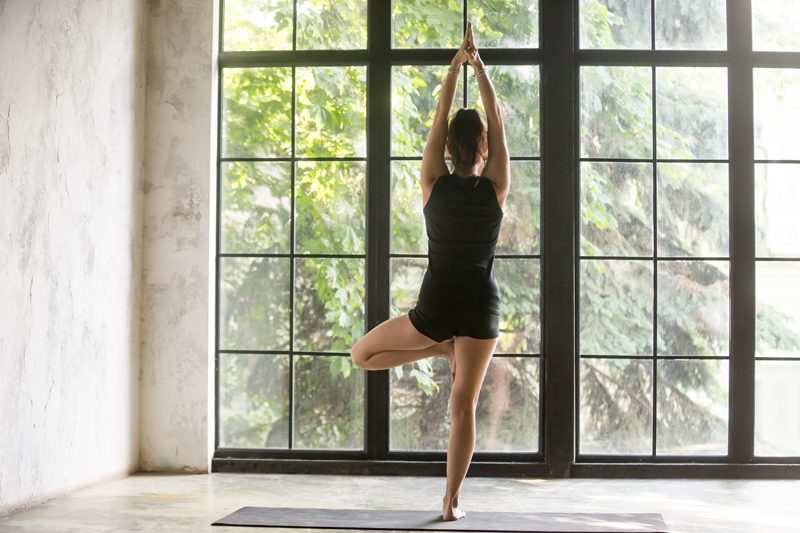
Yoga Warm-ups for Wrist Pain
18th April 2019
Simple Tips to Start Meditation
26th April 2019Yoga Poses That Help Everyone

While some yoga poses have specific benefits, others are great all-rounders. Regardless of your age or ability, these types of poses are ideal. For best results, move slowly through each posture, remembering to breathe deeply throughout. If the weather is warm, you may want to take your mat outside. If you do, remember to wear a yoga cap and some good quality sunblock. Below, we explore a few yoga poses that help everyone.
Downward Facing Dog
Downward Facing Dog strengthens the back, arms, and shoulders while stretching the calves, hamstrings, and arches of the feet. With regular practice, the asana can also relieve back pain. To practice Downward Facing Dog, stand tall with your feet shoulder-width apart. Bending at the waist, slowly lower your torso forward until your body forms a triangle. Your hands and feet should now be securely on the floor. If your shoulders or hamstrings feel too tight for the pose, try bending your knees slightly to make it easier. Spreading your fingers for additional balance, move your head forward until it is in-between your upper arms. For best results, move your shoulders away from your ears. You are in Downward Facing Dog. For a deeper stretch, try extending your tailbone up and back, breathing deeply as you move. While the recommended duration is 2 minutes, Downward Facing Dog can be held for as long as you like.
Plank Pose
Plank Pose helps to build strength in the shoulders, core, arms and legs. To practice Plank Pose, begin on all fours. Tuck your toes under and lift your legs up off the floor. Slide your feet back until your body forms a straight line from your head to your feet. Finally, engage your abdominals and draw your shoulder blades down and back. You are in Plank Pose. Keep your abdominals engaged to hold the position for as long as you can.
Four-Limbed Staff Pose
Four-Limbed Staff Pose is good to learn if you’re hoping to work on more advanced postures. With regular practice, it will prepare your body for more complex arm balances and inversions. From Plank Pose, breathe out and bend your arms to lower your body towards the mat. Do this slowly and be careful not to lower your body past the 90-degree angle of your arms. Extend your tailbone towards your heels, draw your belly button towards your spine, and bring your chest forward. Finally, open your shoulder blades and hug your arms into your body. You are in Four-Limbed Staff Pose. Hold the posture for 30 seconds whilst breathing deeply.
Child’s Pose
Child’s Pose is one of the best restorative postures of all time. This asana can be used to rest and refocus before moving onto the next pose. Additionally, it stretches the lower back, hips, and ankles while relaxing the spine, neck, and shoulders. To practice the Child’s Pose, begin by kneeling on the mat. Next, take a deep breath in as you sit back on your heels. As you breathe out, walk your hands out in front of you until your chest is resting on the mat. If it feels comfortable, rest your forehead on the mat and relax your arms by your sides. You are in Child’s Pose. Hold the asana for around 1 minute whilst breathing deeply.
Cobra Pose
Cobra Pose can help strengthen the back and shoulders, increase spinal flexibility, and stretch the shoulders, chest, and abdomen. To practice Cobra Pose, lie down on your mat with your stomach touching the ground. Lengthen your legs, keeping the tops of your feet on the floor. Next, place your hands flat on the ground, letting them lie directly under your shoulders. Slowly draw your elbows back into your body whilst pressing your thighs and the tops of your feet into the ground. Stay in this position for a couple of seconds, remembering to breathe deeply. When you are ready, begin to lift your chest off the ground by straightening both arms. Finally, press your tailbone firmly into the floor and engage your buttocks. You are in Cobra Pose. For best results, draw your shoulder blades towards your back and distribute the stretch evenly throughout the spine. Hold the posture for around 30 seconds before releasing the backbend and lowering yourself back down to the ground.

Tree Pose
Not only can Tree Pose help improve your balance, but it can also strengthen your core, calves, ankles, thighs, and spine. To practice Tree Pose, stand tall with your feet together. Touch your big toes together, leaving half an inch of space between your heels. Next, touch your palms together in front of your chest and engage your abdominal muscles. Slowly shift your weight onto your right foot, rooting it down by pressing firmly through the ball of your heel and big toe. Gently lift your left foot off the ground, bending the knee as you do so. When you’ve established a sense of balance, place your left foot on the inside of your right thigh. You are in Tree Pose. Hold the posture for 30 seconds before switching sides.
Triangle Pose
Triangle Pose helps build strength in the legs and stretches the spine, hips, shoulders and calves. Additionally, the asana can increase mobility in the neck and hips. To practice Triangle Pose, begin standing with your feet apart. Bring your arms out to the sides until they’re in line with your shoulders. Turn your right foot out 90 degrees and your left foot in 45 degrees. Engaging your quadriceps, bend to the side over your right leg. For support, place your right hand on your ankle, shin, or knee. Finally, lift your left arm towards the ceiling and gaze at your fingertips. You are in Triangle Pose. Hold the asana for 30 seconds before repeating on the opposite side.
Corpse Pose
Corpse Pose is the perfect way to end your workout. When practised at the end of your sequence, it gives you time to relax and reflect on the session. To practice Corpse Pose, lay down on your back and rest your hands by your sides. You are in Corpse Pose. Keep your legs extended and breathe deeply throughout. For best results, remain in the pose for a minimum of 5 minutes.
In Summary
If you’re looking for yoga poses that help everyone, the above sequence will not disappoint. Before getting started, remember to pick up a few pairs of comfortable yoga pants. This way, you’ll always have a fresh pair ready for practice!

